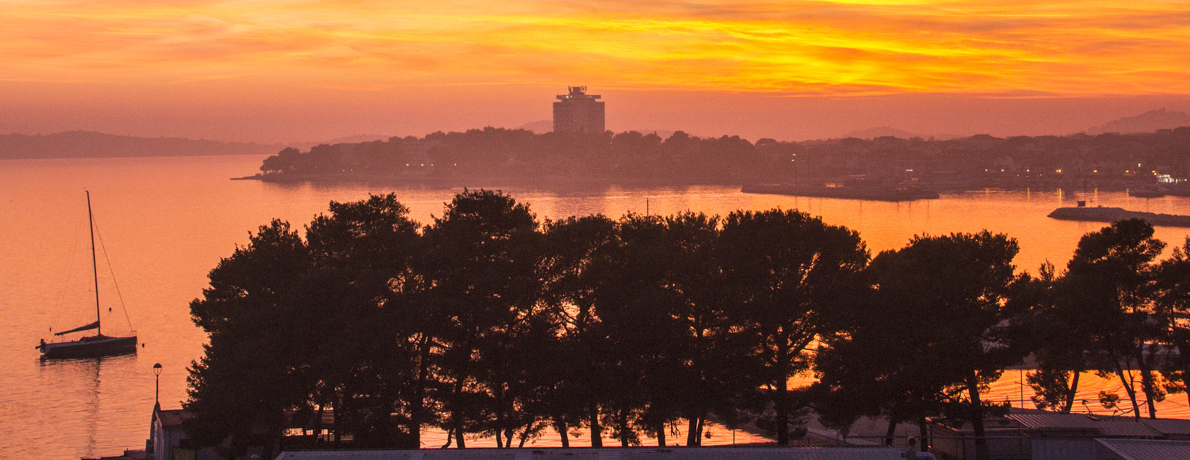
Croatia is increasing in popularity as a holiday destination and with good reason. Here is a look at three different aspects of this beautiful country.
Sun Holidays in Croatia
The stunning natural coastline of Croatia can easily compete with the Amalfi Coast of Italy just lacking the crowds. Sheltered coves and extensive beaches are ideal for seaside holidays based in its small towns or charming fishing villages. My three recommendations are Umag, Vodice and Mlini
Umag on the Istrian Istrian Peninsula in Croatia was once a favourite summer haunt of the Roman nobility. Today it is a popular resort for visitors from all over the world. Its Riviera stretches for twenty kilometres and includes a long, wide promenade leading into the old town of Umag. A parade of restaurants along the harbour offer rest and refreshment day and night. Paths and tracks meander along the coast through shady pine forests. Perfect for long, leisurely walks or a bike ride. A little tourist train regularly trundles between the town and the beaches just outside it. Playgrounds and inflatables on the small natural lake buzz with excited youngsters. The ideal destination for a summer holiday.
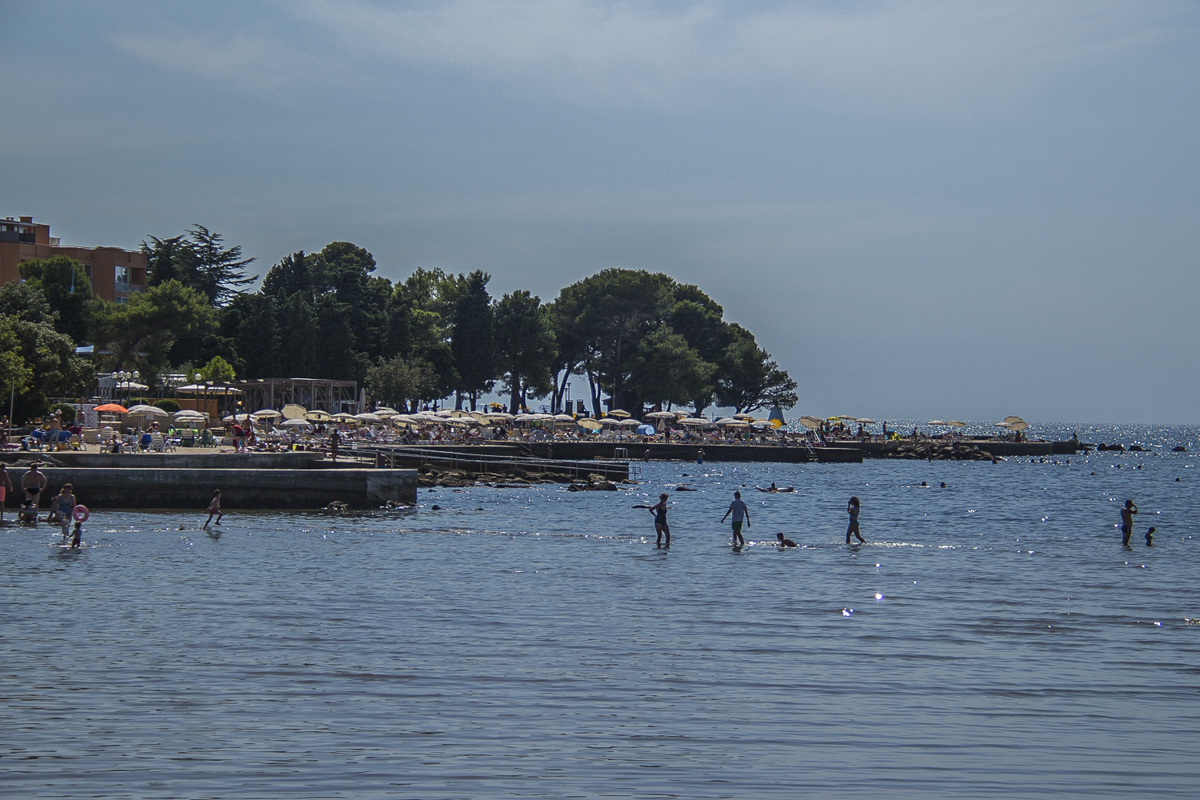
The seafront at Umag on the Istrian peninsula in Croatia
Vodice in the region of Dalmatia region of Croatia. is strung around a large bay studded with small marinas and fringed with pretty beaches. Two of these beaches have been awarded the Blue Flag for preservation of the environment. Join the locals for a coffee and perusal of the paper in one of the bars on the sea front. An extraordinary monument resembling an enormous stone flower dominates its sea front. It is a memorial to those who suffered under the Yugoslav Communist regime when Croatia, formerly Yugoslavia, was part of that regime. The Aquarium and Maritime Tradition Museum. Is a small, quaint museum with some unusual exhibits including some stunning fish collages, rare Roman antiquities and intricate wooden model ships including Nelson’s flagship Victory.
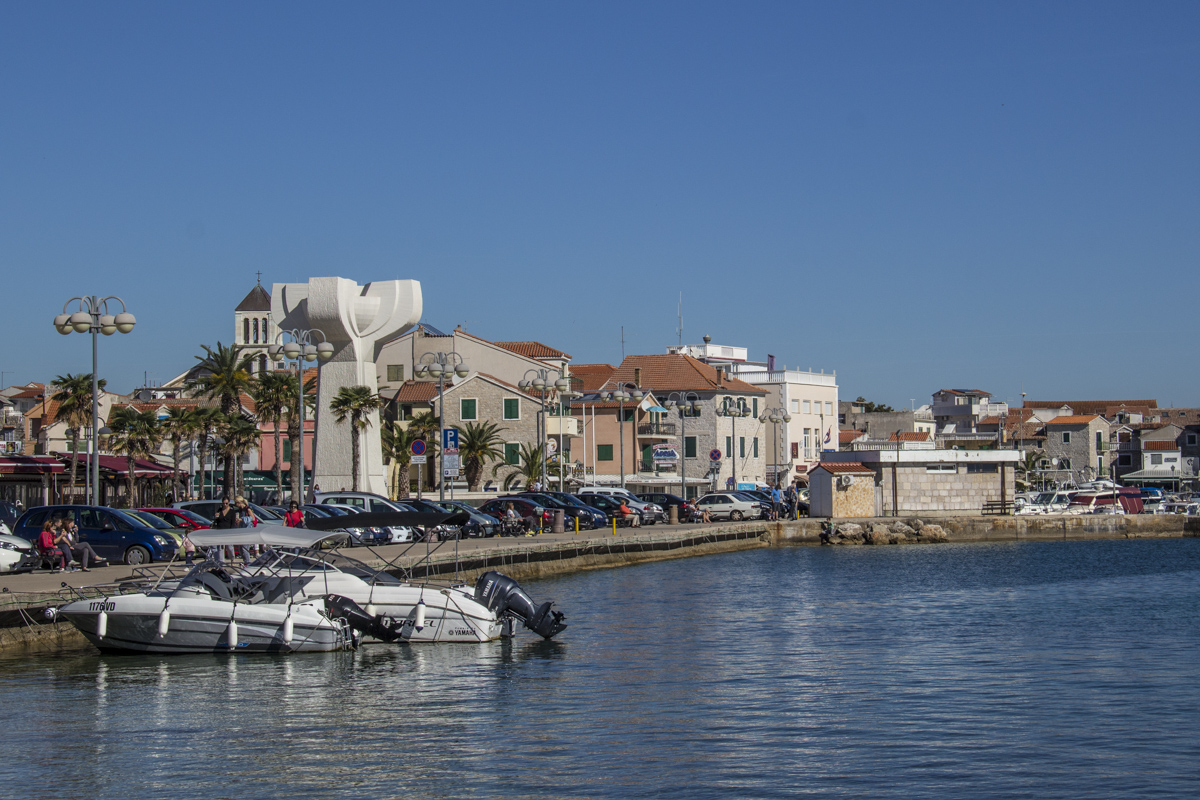
The sea front at Vodice in Croatia
Mlini is a very different seaside resort in the Dubrovnik region of Croatia. This small fishing village is surrounded by hotels. It is a short stroll by the sea to the little port ringed by local restaurants and a small shopping centre. Although the village is close to Dubrovnik it feels very isolated and peaceful. Definitely my kind of place especially as the enchanting town of Dubrovnik is just a half-hour bus ride away. There is so much to do in Dubrovnik you need two days there to do it justice. That would allow time to wander through the narrow, cobbled streets of the old town and visit some of its historic buildings including the Old Pharmacy Museum. Walking the full circuit of the city walls is a real treat. For a bird’s eye view of Dubrovnik the cable car will whisk visitors to the top of Srd Hill looming above the town.
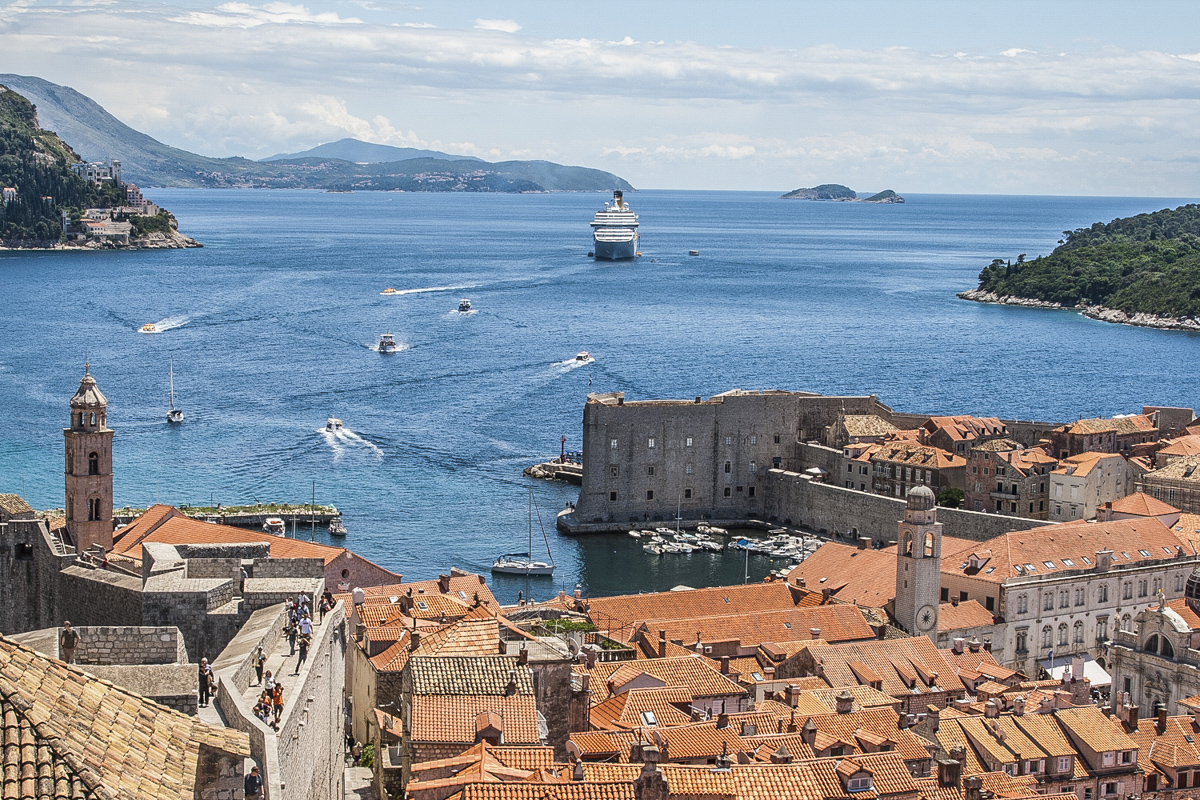
The old port in Dubrovnik, Croatia
Enjoying the Scenery in Croatia
A rugged coastline clothed with extensive pine forests and backed by the occasional mountain will delight strollers and serious walkers. My two favourite scenic haunts are Krka National Park and the Makarska Riviera
Krka National Park encompasses the river basin of the Krka River as it flows through the Dalmatia region of Croatia. The action of the river flowing over rocks of different hardness means they erode at a different rate creating caves, sink holes and terraces. This is known as a karst landscape whereby terraces are created resulting with impressive waterfalls cascading down them. Paths and steps allow visitors to enjoy spectacular views from vantage points and viewing platforms. The park features old watermills that are open to the public. There is also a permanent exhibition dedicated to the Krka Hydroelectric Plant which opened on the banks of the Krka River in 1895. Visitors should make sure they have time to really appreciate the nature in this park, peruse the souvenir shops selling traditional handicrafts and maybe have time for a meal in the restaurant by the old mill pond.
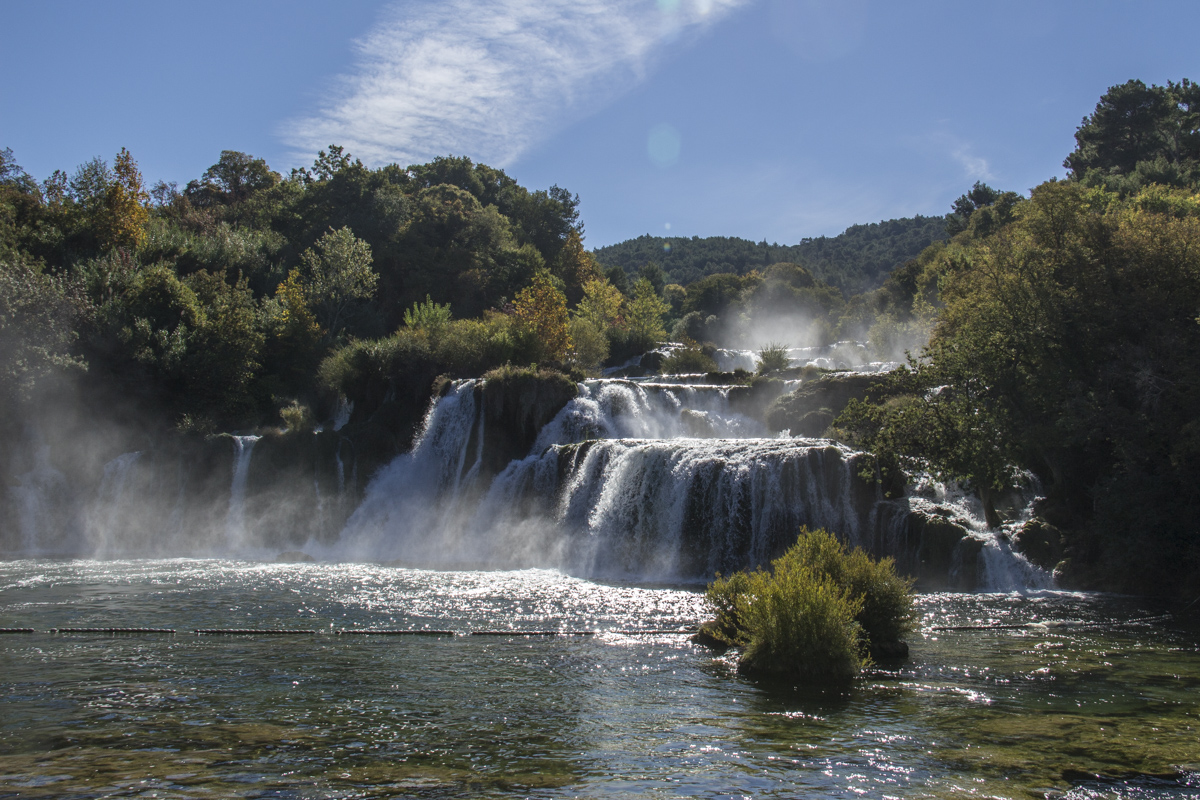
Waterfalls in the Krka National Park, Croatia
The Makarska Riviera is another area of outstanding natural beauty in Dalmatia. This Riviera stretches along the coast on either side of its attractive capital, Makarska. This town is a lovely place to stay while exploring the area. Lovely walks through shady pine woods wind their way along the coast. Standing guard over the town is the impressive Mount Biokovo that stands guard behind the town. This huge mountain has been fashioned by nature into a series of peaks, plains and valleys. All of those can be explored on foot following the trails that have been established for walkers. The highest peak, the peak of Sveti Jure (Saint George) is 1762 metres above sea level and the second highest peak in Croatia, is also accessible by road so everyone can marvel at the magnificent views from the top. As the sun sets the rocky outcrops turn a beautiful shade of pink in the fading light. Just driving along the coast roads visitors feel compelled to stop to enjoy the spectacle of sheer cliffs dropping straight into the azure sea below them. And a scattering of small villages, their white buildings punctuating the green of the lush countryside.

View from Mount Biokovo on the Makarska Riviera in Dalmatia, Croatia
Sightseeing in Croatia
A hint of the Venetian Republic, a splash of Rome, a dash of pirates and a king of Croatia can all be found in the historic cities of Split, Šibenik, Trogir and Omis
Split
is the second largest city in Croatia. Its sea front with its long, wide promenade known as the Riva is reminiscent of an elegant French resort. This is not surprising as this area was once occupied by the French under Napoleon. An imposing wall that once surrounds Diocletian’s Palace is the backcloth to an avenue of restaurants and bars. Emperor Diocletian built this palace in 295 AD as his retirement home. Today, what remains of his palace has become incorporated in the medieval town centre. The original rooms around the south entrance to the palace have been restored and are open to the public. Beyond these large empty rooms is the peristil once the main open space in the palace and now the centre of the old town. While strolling through the old town it is not unusual to come upon a group of men singing acapella style (without music). This multi-part singing is known as klapa which is protected by UNESCO Outside the golden gate is a huge statue of Bishop Gregory of Nin (Grgur Ninski) loomed over me. He was perceived to be the protector of the Croatian identity. A highlight of any visit to this town is a stroll through Marjan Park on the slopes of Marjan Hill that rises above the town.
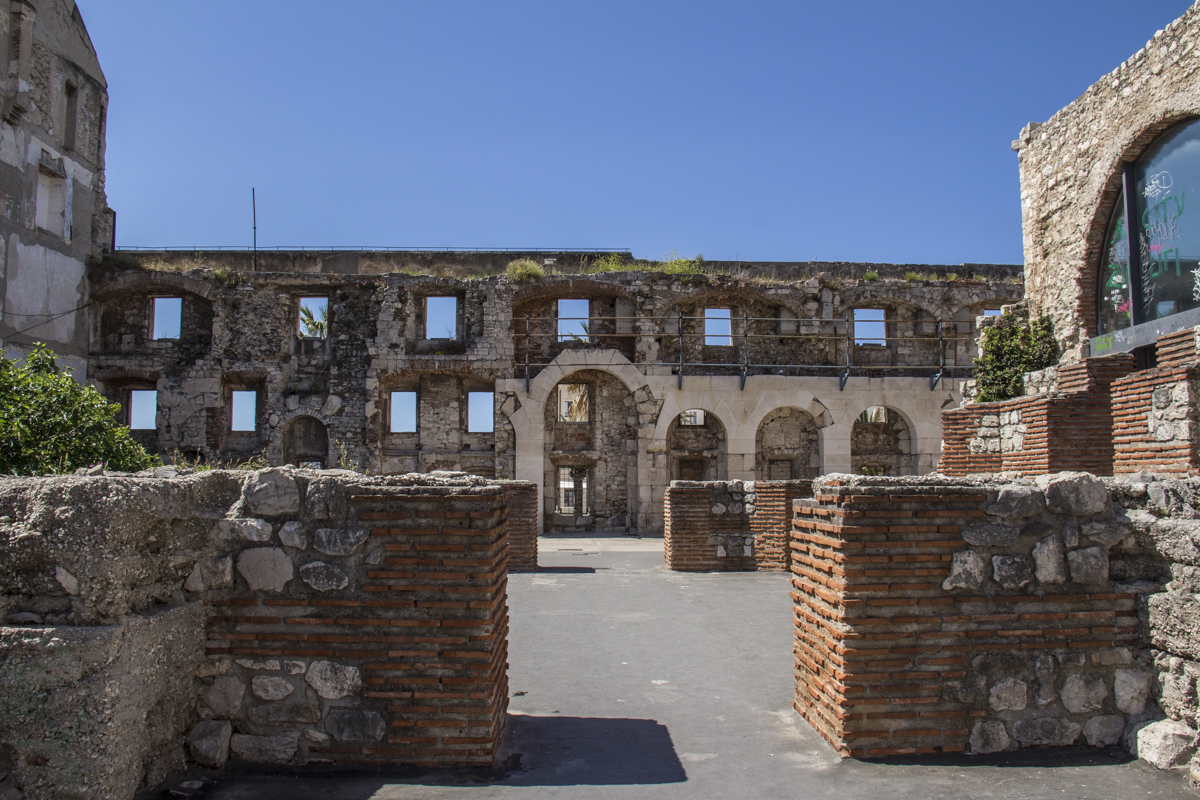
Palace of Diocletian in Split, Croatia
Šibenik is believed to have been founded by the Croatian King Petar Krešimir. Šibenik’s old town is a delightful mixture of arches, alleyways and flights of stone steps. Tall buildings lining its narrow streets ensured shade in the hot summers and shelter from the fierce winds in winter. Time is not of the essence as far as the locals are concerned and local bars are busy with clusters of men taking their time over a cup of coffee. An eclectic mix of architecture from medieval churches, a Venetian Town Hall and the mongrel Palazzo Gogala will fascinate its visitors. Highlights include the Cathedral of St James and the Fortress of Saint Michael above the old town.
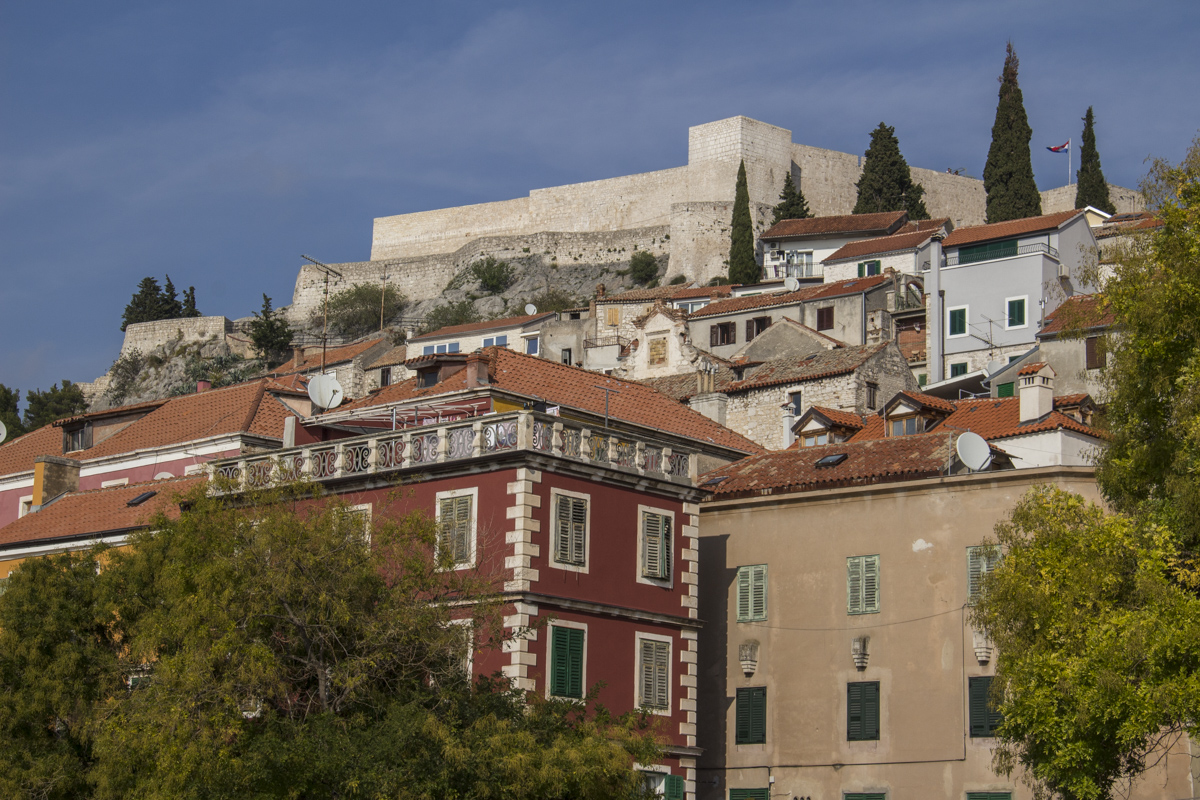
The Fortress of Saint Michael above Šibenik in Croatia
Trogir was originally established on an island but has spilled out onto the banks of the river on either side of it. The best place to appreciate this city is from the bell tower of its cathedral, the Cathedral of Saint Lawrence. From here visitors can appreciate the original Roman forum now known as Saint Paul II Square and the façade of the grandiose, Large Cipiko Palace. This fifteenth century palace is one of several built by the most powerful Venetian families who once occupied this town. The cathedral is considered to be one of the finest buildings in Croatia. Its construction was spread over four centuries and it is entered through a beautiful Romanesque door carved by Master Radovan in 1240 and generally referred to as Radovan’s Portal. The sea front is dominated by the impressive Kamerlengo Castle another Venetian heritage. The courtyard of this castle is an excellent venue for outdoor events during the summer months.

View from the cathedral bell tower in Trogir, Croatia
Play pirates in Omis once an impregnable stronghold for the corsairs of Omis during the Middle Ages. They plundered the Croatian coastline in speedy ships built for the purpose and then sought shelter in the estuary of the River Cetina.. This estuary was guarded by the strategically placed Fortress Mirabella also known as Peovica. Visitors can still climb up there today and enjoy the same vantage point that afforded these pirates their success. Pleasure boats run a service to this town wending their way through the reed beds that line the River Cetina. A very fitting entrance to this unusual little town.
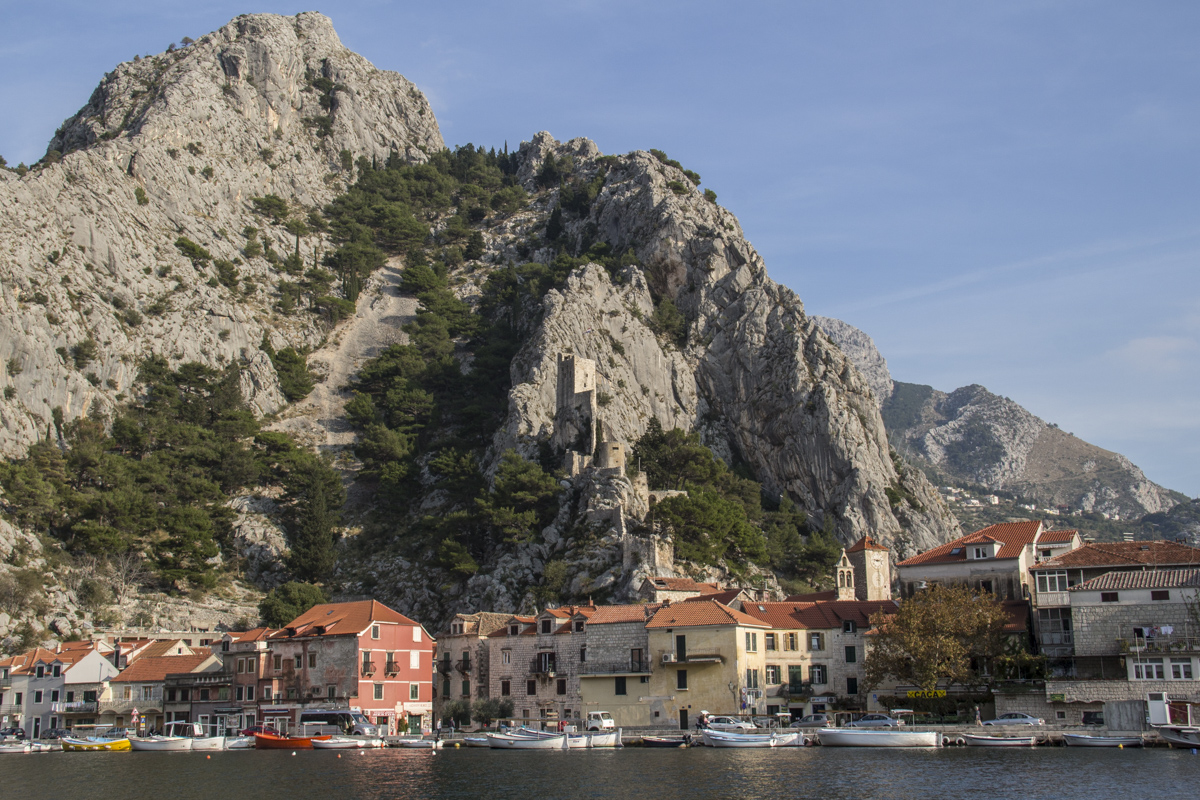
Omis in Croatia
This article is based on the personal experience of Valery, an ExperiencedTraveller.